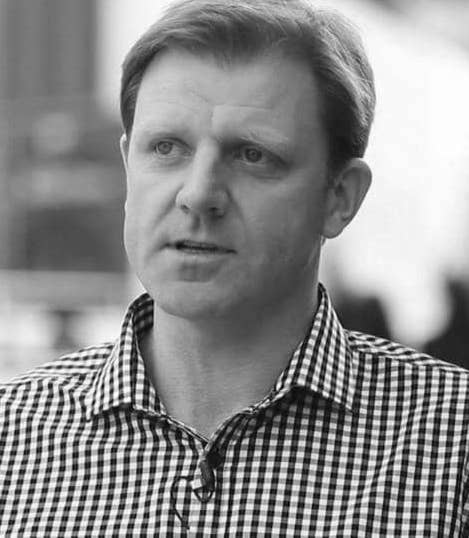
05/02/2020
Opportunity knocks: A game-changing era for design and sustainability
By Chris Sherwin, Director at Reboot Innovation
In 2019 the world began declaring a climate and ecological emergency, finally waking up to a planet in crisis. Governments (the UK being the first) and business leaders are beginning to, amongst other things, sign declarations calling for urgent and radical action on climate change.
All this is happening against a backdrop of infernos in Australia, almost biblical floods in Brazil and Spain, and record heat waves in London and Paris – visible signs of the long-term impacts of our planetary negligence. Just how this will impact society, economy and design is beginning to emerge and one thing is clear: this is BIG and it requires us to go beyond minor tweaks to what exists today.
Beyond EcoReDesign
The creeping incrementalism that so dominates sustainable business and design today, saving 3, 5, even 10% of materials or energy, may be better but simply won’t cut it for the long term. Sustainability is more than just an improvement agenda, it’s a new operating model that requires disruptive, radical innovation. The time for ‘design-as-usual’ with a sprinkling of green fairy dust is behind us.
As one impressive sustainable innovation programme, Project Breakthrough notes… “Sustainable Development Goals are a more radical agenda than most business leaders yet realize. They imply a shift from incremental to exponential mindsets and ambitions; from our current focus on the negative impacts of economic activity to the deliberate generation of positive impacts; and from the business case for action to a reconsideration of business models that ensures industries are fit for tomorrow’s very different market and geopolitical realities.”
Examining one widely reported and highly design-relevant sustainability area, sustainable packaging, underscores this. Media and consumer interest in packaging and waste is at an all-time high, yet the dominant response from the packaging industry is largely one of two things: recycle or substitute packaging materials. Put simply, this means you design the same pack which is more recyclable or made from eco-materials alternatives. Yet we know that we cannot possibly recycle our way out of trouble, and that switching to alternative ‘sustainable’ materials can bring other sometimes higher environmental impacts.
We need more creative and innovative approaches to sustainable packaging that reduce, avoid, eliminate or rethink these problems from the outset. Echoing this, some commentators call for sustainability moon-shots likening the innovations needed to defining achievements in human history (like the moon landing) or to ambitious, seemingly unachievable goals. A more appropriate description might be ‘Earth-shots’ as this innovation needs to rebalance a planet not conquer space.
The rise of the opportunity agenda
 If much of this sounds insurmountable or like the traditional fear and doom-mongery from environmentalists, there’s a potential silver-lining to these dark-green clouds. In every problem or risk, there usually lies an opportunity – something that a growing number of sustainability innovators are quick to spot.
If much of this sounds insurmountable or like the traditional fear and doom-mongery from environmentalists, there’s a potential silver-lining to these dark-green clouds. In every problem or risk, there usually lies an opportunity – something that a growing number of sustainability innovators are quick to spot.
For example, the CEOs of recognised corporate sustainability AND design leaders like Nike, Philips and Unilever all now talk of sustainability fuelling innovation and growth.
You might see cynical corporate greenwash in this, but the words are turning into deeds too: Unilever’s most sustainable brands grew 46% faster than the rest of the business and delivered 70% of its turnover growth in 2018. Clearly sustainability can pay.
It’s not just big companies that see opportunity in sustainability either: smaller certified B-Corporation start-ups and SMEs – that have made legal commitments to deliver value to society – grew 28 times faster than their ‘normal’ equivalent in 2018. Clients are spotting sustainability opportunities and forging ahead; designers must at the very least keep up.
One estimate puts the size-of-the-sustainability prize at $12 trillion for businesses that help the world hit long-term (2030) Sustainable Development Goals. The sustainability business case has moved on from simply being about responsibility or cost savings, it’s about innovation, growth and opportunity.
What sustainability means for design
“The sustainability revolution has the magnitude of the agricultural and industrial revolutions but the speed of the digital revolution” says Former US Presidential candidate turned eco-investor Al Gore. I think we are not just integrating sustainability into our way of doing business and design, we are inventing a new economy. Past industrial and digital revolutions led to new forms of design and I’m certain the sustainability revolution will too.
We must change our models and mindsets as part of this: you wouldn’t consider unsafe products that threaten human life to be good design, so why is it any different for wasteful or carbon-intensive ones? New forms of ‘sustainable’ design will be as game-changing and pervasive as human-centred design has been over the last 30 years (watch this space for a subsequent blog on that).
Sustainability may present humanity’s biggest existential challenges, but these are also once-in-a lifetime-chances to innovate. That’s just the sort of world-changing brief that designers love. What an amazing set of commercial and creative opportunities to rethink and redesign a better world.
Image credits
Sven Finger | Unsplash
Ricardo Gomez Angel | Unsplash
DBA Half-day training workshop | London

Even if you have no intention of exiting anytime soon, having a long term leadership framework planned out is critical to the continual growth and future success of your business.
Foster your organisation’s prospective leaders and capability for growth and let your business work for you at this workshop with organisational strategist and DBA Expert Heli Heartland on Wednesday 4 March in London. Find out more and book your place today >

 If much of this sounds insurmountable or like the traditional fear and doom-mongery from environmentalists, there’s a potential silver-lining to these dark-green clouds. In every problem or risk, there usually lies an opportunity – something that a growing number of sustainability innovators are quick to spot.
If much of this sounds insurmountable or like the traditional fear and doom-mongery from environmentalists, there’s a potential silver-lining to these dark-green clouds. In every problem or risk, there usually lies an opportunity – something that a growing number of sustainability innovators are quick to spot.
